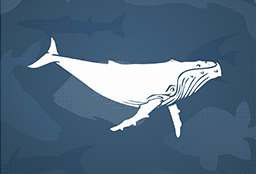Evergreen shrub or small tree. Grows 1 – 6 m high.
Leaves
Bright yellow-green to dark green and paler underneath. They are 4 – 15 cm long and 1 – 3 cm wide, and generally have a toothed or curved edge. The leaves have a minty smell when crushed.
Flowers
Funnel-shaped and white, or pink to pale mauve, with purple and orange spots inside. They are about 2 cm long and grow in clusters at the end of branches. They are slightly scented.
Medium marine snails (molluscs) that float around in the open ocean. They have a purple shell that lightens in colour as you move towards the flattened top of the shell. The shell itself is very light weight and they have no operculum (lid). Their flesh is a dark purple or sometime black.
They float around the open oceans upside down, attached to a raft of mucus bubbles that they make.
Size
Up to 30 mm
Flower-like invertebrate that has many long tentacles surrounding a central mouthpart which is attached to a hard surface. These specialised fighting tentacles come from the acontia, which appear as white spots on the top of the column. At low tide or when disturbed, the tentacles retract and the anemone looks like a round blob of jelly. They range in colour from bright red, reddish-brown to dark purple.
Their tentacles contain hundreds of stinging cells called ‘nematocysts’ which the anemone uses to sting and immobilize their prey, and to do battle with other unrelated anemones. These are the same cells that give Blue Bottles their sting although most anemone species cannot penetrate human skin.
Metallic blue-black on top and light to dark grey on its breast and belly. Its forehead, throat and upper breast are rust in colour. It has grey legs and feet, and its eyes and bill are black. A young Welcome Swallow has shorter tail feathers than an adult and its forehead and throat are a creamy beige (instead of rust).
Distinctive feature
A deeply forked tail with a white band or row of spots on the long tail feathers.
A large bird of prey with a dark grey back and a white head, white chest and white belly. Their legs are also white and have long black talons. They have dark eyes and a light-coloured, hooked beak. When viewed in flight, the undersides of the wings are a distinctive half white and half grey-brown.
First-year juveniles have a buffish and ‘spiky’ head, contrasting with patchy cream and dark brown body and wings; underwing pattern also patchy, but note half-moon at base of tail feathers. Older juveniles have a pale buff-grey tail.
Their nests are massive, made of sticks and branches, usually found in a tall living tree near water or on a remote coastal cliff (on ground if on an island).
Distinctive feature
A wedge-shaped tail, distinctive when seen in flight.
The White-browed Scrubwren is a small, drab bird which inhabits the dense undergrowth in many different habitats. The male has a blackish mask; cream eye; white eyebrow and bold curving silver-white whisker-mark; rufous rump; and a variable dark tail band. The female is duller and her whisker-mark is browner.
Distinctive feature
White-brow and curving silvery whisker-mark.
A medium-sized black and white honeyeater. It has large bright yellow tail and wing panels, with a large conspicuous white cheek patch on a mainly black head. Young birds are duller with brownish plumage.
Size
16-18 cm
Mostly light blue-grey in colour. The forehead, crown, chin and upper throat are white. It has a long, slim neck and a pointed grey-black bill. The legs are long and dull yellow in colour. Easily identifiable when seen from below with the dark flight feathers of the wing contrasting with the paler grey plumage.
Males and females are similar. When breeding, the birds have long feathers (nuptial plumes) on the head, neck and back. Young are similar in appearance to non-breeding adults, with little to no white on the face; underparts often have a reddish colour.
Distinctive feature
Its characteristic white face.
One of Australia's most widespread birds on mainland.Mostly black with a white belly and eyebrow. A young bird has paler, slightly rusty edges to its wing feathers.
Size
18 - 22 cm long (from head to tail)



